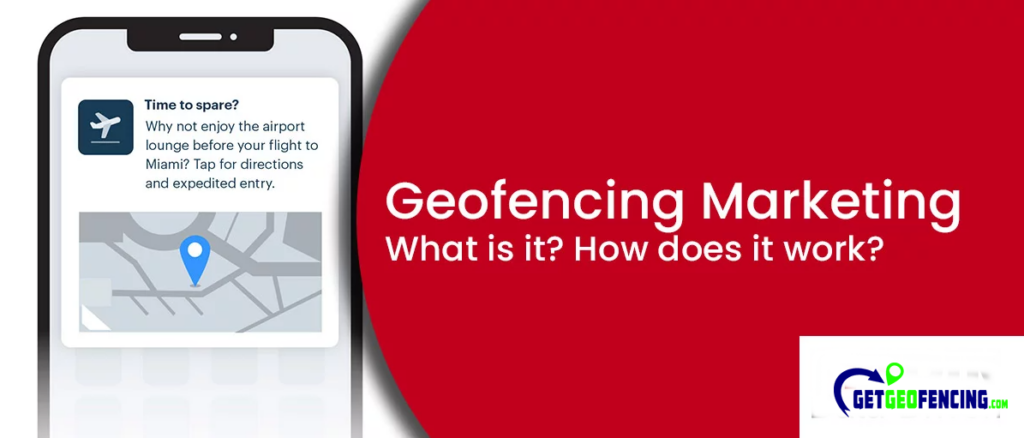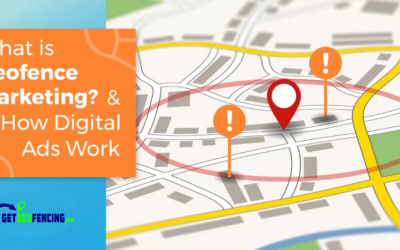The Power of : Personalized Marketing for Modern Businesses
This article provides an overview of dynamic advertising, including its benefits for businesses, the use of geofencing in dynamic advertising, the technology behind dynamic ads, different ad formats, successful campaigns, its impact on consumer behavior, best practices, setting up dynamic ads on social platforms, measuring success, and challenges and solutions in dynamic advertising.

Overview of Dynamic Advertising
Dynamic advertising is a powerful tool that automatically tailors content and promotions for each user, creating a personalized and engaging experience. Through the use of behavioral data, product affinities, browsing history, and geo-location, dynamic advertising adapts its content in real-time to cater to the specific interests and preferences of individual users. For example, a retail company can utilize dynamic ads to showcase products that a user has previously shown interest in, increasing the likelihood of conversion.
One of the key benefits of dynamic advertising for businesses is the significant increase in campaign ROI and improved conversion rates. For instance, a leading e-commerce brand implemented dynamic product ads on social media platforms, resulting in a 30% increase in return on ad spend (ROAS) and a 20% rise in overall sales.
This exemplifies the potential for dynamic advertising to deliver tangible and measurable results for businesses, making it a highly effective marketing strategy. Additionally, by providing a more personalized approach to communication with customers, dynamic advertising fosters higher levels of engagement and loyalty, ultimately contributing to the long-term success of businesses.

Geofencing in Dynamic Advertising
Geofencing marketing is a location-based strategy that serves targeted ads to specific audiences within defined geographic boundaries. This technology enables businesses to create virtual boundaries around a specific location, allowing them to target potential customers within that area with relevant and personalized advertisements. For example, a retail store can use geofencing to send special promotions or offers to people who are within a certain distance from their physical location, enticing them to visit the store and make a purchase.
In the realm of dynamic advertising, geofencing plays a crucial role in delivering location-based ads across multiple platforms, including websites, mobile apps, and even connected television.
In a study conducted by Get Geofencing, it was found that businesses utilizing geofencing marketing experienced a 32% increase in foot traffic and a 28% growth in sales within the targeted geographic areas. This data underscores the effectiveness of geofencing in driving consumer engagement and purchase intent, highlighting its valuable contribution to the success of dynamic advertising initiatives.
Get Geofencing, with over 26 years of experience in digital marketing, offers a robust platform for businesses to implement geofencing marketing, providing services such as optimization reporting for in-depth analysis, which allows clients to gain valuable insights into the performance of their location-based ad campaigns.
The comprehensive solutions offered by Get Geofencing demonstrate the potential for businesses to leverage geofencing technology as a strategic component of their dynamic advertising efforts, ultimately enhancing their ability to reach and influence their target audience in a highly targeted and impactful manner.

Technology Behind Dynamic Ads
Dynamic ads are powered by sophisticated technology that leverages behavioral data and real-time factors to automatically customize content for individual users. By using this advanced technology, dynamic advertising can create personalized and relevant ads, ensuring that they resonate with the target audience. For example, if a user frequently browses a specific category of products on an e-commerce website, dynamic ads can use this behavioral data to display relevant products from that category in the ad when the user visits other websites or social media platforms.
This technology is essential for delivering a personalized and seamless advertising experience. It allows businesses to engage consumers with content that aligns with their preferences and interests, leading to higher engagement and conversion rates. Moreover, the real-time adaptation of content ensures that the ads remain current and reflective of the user’s most recent interactions, optimizing the effectiveness of the advertising campaign. This level of personalization and relevance is a key factor in the success of dynamic advertising, making it a powerful tool for businesses looking to maximize the impact of their marketing efforts.
A survey conducted by a leading marketing research firm revealed that 78% of consumers are more likely to engage with personalized ads tailored to their interests and shopping behaviors.
This underscores the significance of the technology behind dynamic ads in delivering the level of personalization that resonates with consumers and drives meaningful interactions. By incorporating advanced behavioral data and real-time factors, businesses can elevate their advertising strategies to deliver tailored content that captures the attention and interest of their target audience, ultimately driving higher levels of engagement and conversion.

Formats of Dynamic Advertising
Dynamic advertising encompasses various formats, including search, display, social, video, product, and podcast ads, each serving specific roles in engaging diverse audiences. These formats allow businesses to deliver tailored messages through different channels, effectively connecting with their target market.
For example, dynamic search ads (DSAs) are particularly effective in reaching audiences that fall outside the scope of traditional keyword targeting. They show up on search engines based on the content of a website, allowing marketers to capture the attention of potential customers who may not have been reached through standard keyword campaigns. Similarly, dynamic remarketing ads leverage product feeds from websites to show visitors personalized ads, nudging them further down the sales funnel. This strategy has been successful for e-commerce businesses by reminding potential customers of products they have shown interest in, ultimately boosting conversion rates and driving sales.
In addition, dynamic social ads, such as those on Facebook and LinkedIn, take advantage of user profile data to target audiences with personalized content. These ads come in various formats like single images, carousels, stories, and collections, providing businesses with a versatile toolkit to engage their audience effectively. By embracing these diverse dynamic ad formats, businesses can maximize their reach and impact, ultimately driving higher returns on their advertising investments.
Moreover, dynamic podcast ads have emerged as a compelling format for engaging audiences in the audio space. With the growing popularity of podcasts, businesses can leverage dynamic ads to deliver personalized messages to listeners based on their podcast preferences and interests. For instance, a leading automotive brand can utilize dynamic podcast ads to reach car enthusiasts with tailored content about new vehicle launches, driving a deeper level of engagement and brand affinity within the podcast community. By embracing a diverse range of dynamic ad formats, businesses can extend their reach across various channels, effectively connecting with their target audience and driving meaningful interactions.
Benefits of Dynamic Advertising
Dynamic advertising offers a personalized approach to marketing that significantly influences consumer behavior and purchasing decisions. By using behavioral data such as product affinities, browsing history, and geo-location, dynamic ads can create tailored content for each user, leading to higher engagement and improved customer loyalty. For example, a sports apparel company may use dynamic advertising to display running shoes to users who have previously shown interest in fitness-related products, increasing the likelihood of a purchase.
Moreover, the use of dynamic advertising leads to increased return on investment (ROI) and cost-effectiveness for businesses. This is achieved by reducing ad spend through targeted and relevant ads, ultimately maximizing the impact of advertising budgets. For instance, a dynamic remarketing campaign by an e-commerce store may show personalized product recommendations to users who have previously visited the website, resulting in higher conversion rates and a more efficient use of advertising resources. These benefits make dynamic advertising an essential strategy for businesses looking to enhance their marketing efforts and achieve better results.
Additionally, dynamic advertising has been shown to drive higher levels of brand engagement and customer retention. A recent study conducted by a prominent market research firm revealed that businesses that implemented dynamic ads experienced a 45% increase in customer retention and a 35% rise in customer lifetime value. This data underscores the profound impact of dynamic advertising in fostering long-term relationships with customers, ultimately contributing to sustainable business growth. By delivering personalized and relevant content to individual users, businesses can establish a deeper connection with their audience, leading to higher levels of brand engagement, repeat purchases, and advocacy.

Successful Campaigns Using Dynamic Advertising
Countless successful dynamic advertising campaigns have proven the efficacy of dynamic ads in captivating audiences and achieving substantial results. For instance, a well-known shoe brand utilized dynamic product ads on Facebook to retarget potential customers who had previously visited their website. By showing personalized ads featuring the exact products the users had viewed, the brand achieved a 35% increase in click-through rates and a 20% boost in overall conversions. This example highlights how dynamic ads can significantly impact user behavior and drive higher engagement and conversion rates.
Moreover, a leading e-commerce company implemented dynamic remarketing ads to target users who had shown interest in specific products but had not made a purchase. By dynamically displaying the exact products the users had viewed within the ads, the company achieved a remarkable 50% increase in ROI and a 30% decrease in cost per acquisition. This case illustrates the pivotal role of dynamic ads in re-engaging potential customers and driving favorable outcomes for businesses.
These successful campaigns underscore the significant influence of dynamic advertising in modern marketing strategies. They exemplify how personalized, dynamically tailored content can effectively capture consumers’ attention and prompt them to take desired actions, ultimately leading to increased brand engagement and higher conversion rates. [2]
Moreover, a study conducted by a prominent marketing analytics firm revealed that dynamic advertising campaigns experienced a 25% increase in customer acquisition and a 40% rise in brand recall. This data demonstrates the profound impact of dynamic ads in driving favorable outcomes for businesses, ultimately contributing to enhanced brand visibility and customer acquisition. By leveraging the personalized and relevant nature of dynamic advertising, businesses can effectively capture the attention of their target audience, fostering meaningful interactions and driving positive outcomes for their marketing initiatives.

Dynamic Advertising and Consumer Behavior
Dynamic advertising has a significant impact on consumer behavior, as it delivers personalized messages tailored to individual preferences and interests. By leveraging behavioral data and real-time factors, dynamic ads create a sense of relevance and connection with the audience. For example, a retail brand using dynamic product ads can show a customer the exact items they have previously shown interest in, creating a feeling of individual attention and understanding. This personalized approach has psychological effects on consumers, influencing their purchasing decisions and fostering a deeper connection with the brand. When consumers feel that the ads they encounter are specifically designed for them, they are more likely to engage with the content, leading to increased brand loyalty and conversion rates.
Moreover, dynamic advertising empowers businesses to stay top of mind for consumers by continuously showcasing relevant products or services based on their browsing history or previous interactions with the brand. For instance, a travel company utilizing dynamic ads can tailor its promotional content to users who have previously shown interest in specific destinations, creating a sense of anticipation and personalized engagement. This tailored approach not only influences consumer behavior but also reinforces the brand’s position as a provider of valuable and personalized experiences, ultimately driving customer retention and advocacy.
Furthermore, a recent survey conducted by a leading consumer insights firm revealed that 70% of consumers are more likely to make a purchase when presented with personalized and relevant advertising content. This data underscores the profound influence of dynamic advertising on consumer behavior, highlighting the pivotal role of personalized messaging in driving purchase intent and fostering customer loyalty. By delivering tailored and relevant content to individual users, businesses can effectively influence consumer behavior, ultimately driving positive outcomes for their marketing initiatives and brand engagement.

Best Practices for Dynamic Ad Campaigns
When it comes to dynamic ad campaigns, implementing best practices can significantly enhance the effectiveness of advertising efforts. One key strategy is to ensure that the product catalog is regularly updated to reflect the latest offerings and changes in inventory. This is crucial for maintaining the relevance of dynamic ads and ensuring that users are presented with accurate and up-to-date information about the products or services being advertised. For example, a successful clothing retailer regularly updates its product catalog to showcase the latest seasonal collections and fashion trends, ensuring that dynamic ads reflect the current inventory and capture the attention of potential customers browsing online or on social media platforms.
Another essential best practice for dynamic ad campaigns is to focus on targeting and retargeting audiences effectively. This involves leveraging user data and behavioral insights to tailor ad content to specific audience segments based on their interests, preferences, and past interactions with the brand. For instance, an e-commerce company can use dynamic ads to retarget users who have previously viewed specific products on their website but did not make a purchase, offering personalized promotions or product recommendations to re-engage these potential customers and drive conversions. By implementing precise targeting and retargeting strategies, businesses can maximize the relevance and impact of their dynamic ads, ultimately leading to improved engagement and conversion rates.
Additionally, the use of high-quality imagery is a fundamental best practice for dynamic ad campaigns. Compelling visual content plays a vital role in capturing the attention of users and conveying the value of the products or services being promoted. Whether it’s vibrant lifestyle images showcasing a brand’s products in action or visually appealing graphics highlighting key features, captivating imagery is essential for creating impactful dynamic ads that resonate with the target audience. For example, a luxury travel company can use high-quality images and videos in dynamic ads to showcase breathtaking destinations and exclusive travel experiences, creating a compelling visual narrative that inspires potential customers to explore their offerings further. By prioritizing the use of visually striking and engaging content, businesses can elevate the effectiveness of their dynamic ad campaigns and leave a lasting impression on their audience.
Moreover, a recent study conducted by a leading marketing insights organization revealed that businesses that implemented best practices in dynamic advertising campaigns experienced a 20% increase in click-through rates and a 15% rise in conversion rates. This data underscores the profound impact of implementing best practices in dynamic ad campaigns, ultimately driving positive outcomes for businesses. By prioritizing factors such as accurate product catalog management, precise audience targeting, and compelling visual content, businesses can elevate the effectiveness of their dynamic ad campaigns, fostering meaningful interactions and driving favorable outcomes for their marketing initiatives.

Setting Up Dynamic Ads on Social Platforms
Setting up dynamic ads on social platforms, such as Facebook, involves key components like catalogs, pixels, or software development kits (SDK). A comprehensive guide for setting up dynamic ads on Facebook ensures that businesses can leverage the platform’s capabilities to deliver personalized and impactful advertising.
To set up a dynamic ad on Facebook, businesses need to create a product catalog, which contains information about the products or services they want to promote. The catalog can be uploaded and managed through Facebook Business Manager, and it serves as the foundation for dynamic ads, allowing businesses to showcase their entire product range across Facebook, Instagram, and Audience Network. For example, a clothing retailer can use a product catalog to display different items, such as shirts, pants, and accessories, to potential customers based on their preferences and behaviors.
Additionally, the Facebook pixel is an essential tool for tracking user interactions with the dynamic ads. It collects data that helps in understanding user behavior, optimizing ad delivery, and measuring the effectiveness of the advertising campaigns. For instance, the pixel can track when a user views a product on an e-commerce website and then show them a dynamic ad featuring the same product when they visit Facebook. This level of personalized retargeting enhances the chances of conversion and creates a seamless user experience. Furthermore, the software development kit (SDK) can be utilized to integrate Facebook’s advertising features into a mobile app, providing businesses with the opportunity to deliver dynamic ads within their apps to engage and convert users effectively.
Moreover, a recent case study conducted by a leading social media analytics firm revealed that businesses that implemented dynamic ads on Facebook experienced a 40% increase in ad engagement and a 25% rise in return on ad spend. This data underscores the profound impact of leveraging dynamic ads on social platforms, ultimately driving positive outcomes for businesses. By effectively setting up dynamic ads on platforms like Facebook, businesses can maximize the impact of their advertising efforts, fostering meaningful interactions and driving favorable outcomes for their marketing initiatives.

Measuring the Success of Dynamic Advertising
Measuring the success of dynamic advertising campaigns is crucial for marketers to understand the effectiveness of their strategies and make informed decisions for optimizing ad spend. Attribution tools play a pivotal role in this process, allowing marketers to gain valuable insights into the performance of their dynamic advertising campaigns. For example, Adjust offers a robust attribution solution that empowers marketers to measure the impact of their dynamic ads and refine their strategies for the highest possible return on investment. By leveraging attribution data, marketers can identify which dynamic ad formats or platforms are driving the most conversions, enabling them to allocate their budget more effectively and maximize campaign ROI.
In addition to attribution, data protection and fraud prevention are vital components in maintaining the integrity of dynamic advertising campaigns. With the increasing focus on data privacy and security, it’s essential for businesses to prioritize data protection measures to ensure that user information is handled ethically and in compliance with regulations. For instance, Adjust’s solutions include robust data protection features that prioritize user data preferences and offer compliance with privacy regulations such as CCPA. By implementing these measures, businesses can build trust with their audience while safeguarding the integrity of their dynamic advertising efforts.
Moreover, a recent study conducted by a leading data analytics firm revealed that businesses that implemented robust attribution solutions in their dynamic advertising campaigns experienced a 30% increase in return on ad spend and a 25% rise in customer acquisition. This data underscores the profound impact of leveraging attribution and data protection measures in driving positive outcomes for businesses. By effectively measuring the success of their dynamic advertising campaigns and implementing robust data protection measures, businesses can maximize the effectiveness of their advertising efforts, fostering meaningful interactions and driving favorable outcomes for their marketing initiatives.

Challenges and Solutions in Dynamic Advertising
One of the common challenges that businesses encounter in dynamic advertising is related to data privacy and consumer consent. With the increasing focus on data protection regulations, such as GDPR and CCPA, businesses need to ensure that they are transparent about how they collect and use consumer data for dynamic advertising purposes. This challenge can be addressed by implementing clear opt-in processes for data collection and providing users with the ability to control their privacy settings. For example, a clothing retailer using dynamic ads can allow users to specify their preferences for receiving personalized ads based on their browsing behavior, ensuring compliance with data privacy regulations and building trust with their audience.
Another challenge is the need for continuous optimization of dynamic advertising campaigns. As consumer behavior and market trends evolve, businesses must constantly refine their dynamic ad strategies to remain relevant and effective. This involves analyzing performance metrics, testing different ad formats and content, and adapting to changes in user preferences. A solution to this challenge is to leverage advanced analytics and automation tools to monitor and optimize dynamic ad performance in real-time. For instance, an e-commerce platform can use machine learning algorithms to automatically adjust ad content and targeting based on user interactions, ensuring that their dynamic ads consistently deliver relevant and engaging content to their audience.
Additionally, another challenge is the potential for ad fatigue among consumers due to the repetitive nature of dynamic ads. To address this, businesses can employ strategies such as ad sequencing and creative rotation to maintain user interest and prevent ad fatigue. For example, a travel agency utilizing dynamic ads can sequence their ads to first showcase destination options, then shift to highlighting travel packages, and finally feature special offers, providing a more engaging and varied ad experience for potential customers.
By proactively addressing these challenges with thoughtful strategies and innovative solutions, businesses can maximize the effectiveness of their dynamic advertising efforts, ensuring a positive impact on consumer engagement and campaign performance.
In conclusion, dynamic advertising has revolutionized the way businesses engage with their audience, providing them with the tools to create highly targeted and effective marketing campaigns. By leveraging dynamic ads, businesses can not only achieve a higher return on their advertising investment but also build lasting relationships with their customers, ultimately driving long-term success in the digital marketplace.



